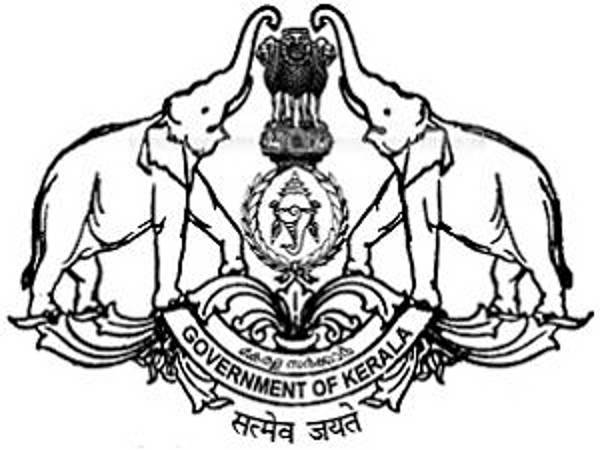Latest Applications Open 2024:
CLAT 2025 Exam Pattern has been Available now. The CLAT 2025 Exam Pattern will consist of types of questions, number of questions, scoring system, etc. CLAT (Common Law Admission Test) is an entry-level test in India that is regulated by the Odisha National Law University, Cuttack (NLUO). The Common Law Admission Test (CLAT) is a highly prestigious entrance examination conducted for undergraduate and postgraduate law program admissions in various participating National Law Universities (NLUs) in India.
The CLAT 2025 Exam will be held on 1st December 2024. This exam will be held for admissions to the UG law courses and after the law’s graduation for the LL.M. The CLAT 2025 exam will consist of multiple-choice questions (MCQs) based on subjects such as the English Language, Current Affairs, Legal Reasoning, Logical Reasoning, and Quantitative Techniques.
The Consortium of NLUs has established the exam pattern for CLAT 2025, applicable to both undergraduate (UG) and postgraduate (PG) programs. Familiarizing oneself with the CLAT paper pattern 2025 is crucial as it provides key insights into the exam structure, including question types, total number of questions, marking scheme, mode of exam, and duration.
CLAT 2025 Exam Pattern – Available
CLAT 2025 Exam Pattern has been Available now. Click to Download Pattern & Syllabus.
CLAT 2025 Exam Pattern – Highlights
| Category | Details |
| Time duration | 2 hours |
| Mode | Offline mode (pen paper-based mode) |
| Conducting Body | Consortium of National Law Universities (CNLU) |
| Type of questions | Objective-type questions |
| Number of questions | CLAT UG – 120 questions<br>CLAT PG – 120 questions |
| Total marks | 120 marks (Both CLAT UG and CLAT PG) |
| CLAT UG marking scheme | Correct answer – 1 mark Incorrect answer – 0.25 marks deduction Un-attempted questions – No negative marking |
| Language | English |
Here are some key points regarding the CLAT paper pattern:
- CLAT 2025 assesses candidates’ comprehension and reading abilities rather than testing their prior legal knowledge.
- The exam focuses on evaluating aptitude and skills essential for legal education.
- CLAT 2025 covers five subjects: English Language, General Knowledge & Current Affairs, Legal Reasoning, Logical Reasoning, and Quantitative Techniques.
- The duration of the CLAT 2025 exam is two hours.
- The exam includes passage-based questions, reflecting the emphasis on evaluating comprehension and reasoning skills.
CLAT 2025 Exam Pattern
The CLAT 2025 examination consists of five sections with a total of 120 questions. The Consortium of NLUs has defined the weightage for each section. Each question in CLAT 2025 carries one mark, making the maximum attainable score 120. Additionally, there is a provision for negative marking, deducting 0.25 marks for each incorrect answer.
Latest Applications For Various UG & PG Courses Open 2024
-
- Parul University | Admissions Open for All Courses 2024. Apply Now
- Chandigarh University | Admissions Open for All Courses 2024. Apply Now
- NIIT | Admissions Open for All Courses 2024. Apply Now
- KL University | Admissions Open for All Courses 2024. Apply Now
- Alliance UG | Admissions Open for All Courses 2024. Apply Now
- GD Goenka | Admissions Open for All Courses 2024. Apply Now
Previously, the CLAT exam consisted of 150 questions. However, the Consortium revised the CLAT paper pattern for 2025, reducing the number of questions to 120. Candidates are allotted a time of two hours to complete the exam. All questions in the entrance exam are of objective type. Notably, no marks are deducted for unanswered questions. Below is the detailed CLAT 2025 paper pattern:
CLAT Marks Distribution 2025
The CLAT 2025 exam pattern has been revamped to include a total of 120 questions, categorized into five sections. Each section carries a specific weightage, contributing to the overall assessment of candidates’ aptitude and knowledge in various areas relevant to legal education.
| Section | Number of Questions | Marks | Weightage |
| English Language | 22-26 | 22-26 | 20% |
| Current Affairs including General Knowledge | 28-32 | 28-32 | 25% |
| Legal Reasoning | 28-32 | 28-32 | 25% |
| Logical Reasoning | 22-26 | 22-26 | 20% |
| Quantitative Techniques | 10-14 | 22-26 | 10% |
| Total | 120 | 120 | 100% |
CLAT PG Exam Pattern 2025
The Consortium of NLUs releases the CLAT LLM 2025 exam pattern separately on its website. The CLAT PG exam consists of objective-type questions with a total of 120 questions. Each question carries one mark, making the maximum mark for the exam 120. Candidates will receive one mark for each correct answer, while incorrect responses will result in a deduction of 0.25 marks. Notably, there is no negative marking for unanswered questions. The CLAT LLM paper covers questions from constitutional law and other branches of law. Below is the detailed CLAT PG exam pattern 2025:
CLAT 2025 LLM Exam Pattern
| Sections | Number of Questions | Marks |
| Constitutional law | 120 | 120 |
| Other branches of law | – | – |
| (administrative law, law of contract, jurisprudence, torts, family law, criminal law, company law, property law, public international law, tax law, environmental law, labour and industrial law) | – | – |
| Total | 120 | 120 |
CLAT Marking Scheme 2025
| Particulars | Details |
| Correct response | 1 mark |
| Incorrect response | -0.25 mark |
| Unanswered question | 0 mark |
In CLAT 2025, candidates will be awarded one mark for each correct answer. However, there is a provision for negative marking, with 0.25 marks being deducted for each incorrect response. Unanswered questions do not result in any deduction.
CLAT Exam Pattern 2025 – Key Features
- Passage-based Questions: Except for the Quantitative Technique section, all other sections will feature passage-based questions. English, Current Affairs, and Logical Reasoning will have passages of about 450 words each. The Logical Reasoning section will contain shorter passages of around 350 words. Each passage will be followed by several questions.
- Quantitative Techniques Section: This section will include short sets of data, propositions, graphs, and pictorial representations. Candidates will need to derive answers based on these passages and representations.
- Total Number of Questions and Marking Scheme: The CLAT UG exam consists of 120 multiple-choice questions, each worth 1 mark.
- Negative Marking: There will be a penalty of 0.25 marks for every incorrect answer.
- Total Marks: The CLAT 2025 exam will be scored out of 120 marks.
- Exam Difficulty Level: The exam will be set at a Class 12 difficulty level, with Quantitative Techniques questions at a Class 10 level.
- Skills to be Evaluated: The exam will assess candidates’ comprehension and reasoning skills, making rote learning ineffective.
CLAT UG Syllabus 2025
The CLAT UG 2025 syllabus covers various important topics and subjects, including English Language, Current Affairs, Legal Reasoning, Logical Reasoning, and Quantitative Techniques. Understanding this syllabus is essential for candidates preparing for the exam.
| Subjects | Topics |
| English Language | – Grammatical errors and sentence correction – Synonyms & Antonyms – Tenses – Fill in the Blanks – Active & Passive Voice |
| Current Affairs, including General Knowledge | – National & international events – Government schemes – Science & technology – Sports- Awards & honours – Arts & culture – Historical events of current relevance |
| Legal Reasoning | – Indian Constitution: Fundamental Rights, Duties, Judiciary, Parliament, Directive Principles of State Policy, Local governments, Significant amendments and provisions, Landmark judgments – Current legal affairs – Law of Torts – Laws of Contract – IPR Law – Family Laws |
| Logical Reasoning | – Analogies – Series, logical sequences and matching – Seating arrangement – Syllogisms – Blood relations |
| Quantitative Techniques | – Ratios and proportions – Basic algebra – Mensuration – Statistical estimation – Algebra |
CLAT UG Exam Pattern Subject Wise Analysis
The CLAT 2025 exam pattern is detailed across various sections, each with specific question counts and weightages. Understanding the distribution of questions and their importance in each section is vital for candidates preparing for the exam. Below is a breakdown of the CLAT 2025 paper pattern for each section.
| Section | Number of Questions | Weightage | Description |
| CLAT English Language | 22 to 26 | 20% | This section includes passages of approximately 450 words derived from historically significant non-fiction and fiction writing. The difficulty level is aligned with class 12 standards. Candidates find it easy but tricky. |
| CLAT Current Affairs including General Knowledge | 28 to 32 | 25% | Passage-based questions on current affairs covering static general knowledge, national and international news, and related topics. Considered the easiest section by past candidates. |
| CLAT Quantitative Techniques | 10 to 14 | Minimum | Questions based on elementary mathematics including topics like ratio and proportions, basic algebra, mensuration, and statistical estimation. |
| CLAT Legal Reasoning | 28 to 32 | – | Passages of around 450 words related to public policy-making, legal matters, or moral philosophical inquiries. Generally perceived as easy with short passages. |
| CLAT Logical Reasoning | 22 to 26 | 20% | Passages of around 450 words followed by one or more questions. Questions are of easy to moderate diff iculty level. |
CLAT 2025 Sectional Weightage
The CLAT UG question paper is anticipated to have 120 passage-based multiple-choice questions, each worth one mark, summing up to 120 marks. According to the CLAT 2025 sectional weightage, candidates can refer to the following breakdown of questions and marks for each section:
Latest Applications For Various UG & PG Courses Open 2024
-
- Parul University | Admissions Open for All Courses 2024. Apply Now
- Chandigarh University | Admissions Open for All Courses 2024. Apply Now
- NIIT | Admissions Open for All Courses 2024. Apply Now
- KL University | Admissions Open for All Courses 2024. Apply Now
- Alliance UG | Admissions Open for All Courses 2024. Apply Now
- GD Goenka | Admissions Open for All Courses 2024. Apply Now
| Sections | MCQs per section | Maximum Marks | Approximate Weightage (in %) |
| English Language | 28-32 | 28-32 | 18.66 – 21.33 |
| Current Affairs including General Knowledge | 35-39 | 35-39 | 23.33 – 26 |
| Logical Reasoning | 28-32 | 28-32 | 18.66 – 21.33 |
| Legal Reasoning | 35-39 | 35-39 | 23.33 – 26 |
| Quantitative Techniques (Elementary Mathematics up to Class 10) | 13-17 | 13-17 | 8.66 – 11.33 |
| Total | 120 | 120 | 100% |
CLAT Preparation Books 2025
To prepare effectively for CLAT 2025, candidates can refer to the following recommended books for each section:
| CLAT Sections | Important CLAT Books |
| English Language | – English Grammar by Wren & Martin |
| – Word Power Made Easy by Norman Lewis | |
| Current Affairs including General Knowledge | – General Knowledge 2022-2023-2024 by Arihant Publications |
| – Manorama Year Book | |
| Logical Reasoning | – A Modern Approach to Logical Reasoning by RS Aggarwal |
| – Arihant’s A New Approach to Verbal and Analytical Reasoning | |
| Legal Reasoning | – Pearson’s Legal Awareness and Legal Reasoning |
| – Pearson’s Guide to the CLAT | |
| Quantitative Techniques | – NCERT Class 10 Book |
| – Quantitative Aptitude by RS Aggarwal |
CLAT 2025 Participating NLUs and Seats
| NLUs | CLAT Seats (Approx) | State quota (Domicile and Category) | All India seats |
| National Law School of India University, Bangalore | 180 | 25% | 135 |
| National Academy of Legal Studies and Research, Hyderabad | 132 | 25% | 99 |
| National Law Institute University, Bhopal | 120 | 50% | 60 |
| West Bengal National University of Judicial Sciences, Kolkata | 132 | 36% | 91 |
| National Law University, Jodhpur | 120 | 27.50% | 87 |
| Hidayatullah National Law University, Raipur | 170 | 50% | 85 |
| Gujarat National Law University, Gandhinagar | 172 | 25% | 156 |
| Ram Manohar Lohiya National Law University, Lucknow | 169 | 52% | 81 |
| Rajiv Gandhi National Law University, Patiala | 180 | 10% | 162 |
| Chanakya National Law University, Patna | 138 | 66% | 54 |
| National University of Advanced Legal Studies, Kochi | 60 | 51% | 31 |
| National Law University Odisha, Cuttack | 106 | 25% | 79 |
| National University of Study and Research in Law, Ranchi | 120 | 50% | 60 |
| National Law University and Judicial Academy, Guwahati | 60 | 48% | 31 |
| Damodaram Sanjivayya National Law University, Visakhapatnam | 138 | 40% | 54 |
| Tamil Nadu National Law School, Trichy | 114 | 50% | 57 |
| Maharashtra National Law University, Mumbai | 150 | 63% | 55 |
| Maharashtra National Law University, Nagpur | 120 | 62% | 46 |
| Maharashtra National Law University, Aurangabad | 60 | 62% | 23 |
| Himachal Pradesh National Law University, Shimla | 120 | 25% | 90 |
| Dharmashastra National Law University, Jabalpur (MPDNLU) | 120 | 40% | 48 |
| Dr B.R. Ambedkar National Law University | 120 | 25% | 90 |
| Total | 2801 | 1674 |
CLAT 2025 Exam Pattern FAQs
What is the CLAT 2025 exam pattern?
The CLAT 2025 exam pattern consists of five sections: English Language, Current Affairs including General Knowledge, Quantitative Techniques, Legal Reasoning, and Logical Reasoning.
How many questions are there in the CLAT English Language section?
The CLAT English Language section comprises 22 to 26 questions.
What is the weightage of the Current Affairs including the General Knowledge section in CLAT 2025?
The Current Affairs including the General Knowledge section carries a weightage of 25% in the CLAT 2025 exam.
How many questions can one expect in the CLAT Quantitative Techniques section?
The CLAT Quantitative Techniques section includes 10 to 14 questions.
Are there negative marks for incorrect answers in CLAT 2025?
Yes, there is a provision for negative marking in CLAT 2025. 0.25 marks are deducted for each incorrect response.
What is the primary focus of the CLAT Legal Reasoning section?
The CLAT Legal Reasoning section primarily focuses on passages related to public policy-making, legal matters, or moral philosophical inquiries.
If you have doubts regarding the CLAT 2025 Exam Pattern, you can ask your query in the comment box below.

As a dedicated Biology Science graduate, I’m passionate about sharing the latest updates in national and state entrance exams through my blog. I aim to keep aspiring students informed about exam trends, important dates, and changes in syllabi. With a keen interest in education, I strive to offer valuable insights for students navigating the competitive landscape of entrance examinations and admission tests. Stay updated with me.


